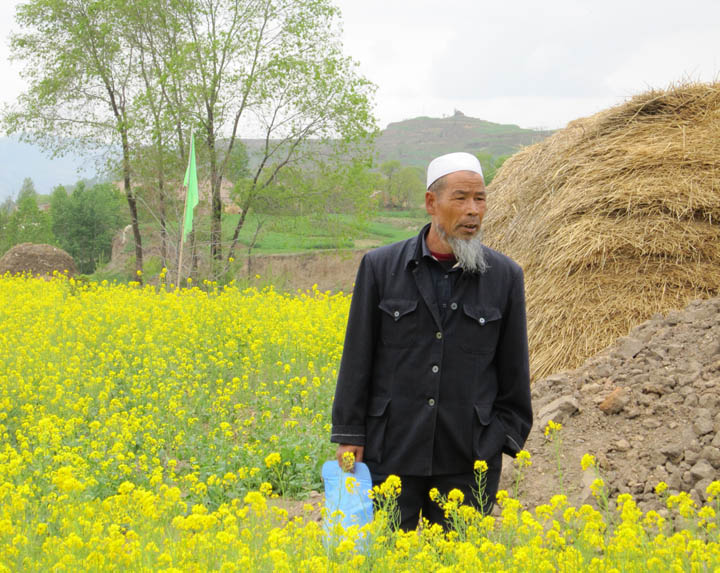

Chinese farmers switch crops to adapt to climate change

For decades, Mr. Ma and the farmers in Jinyuan, an impoverished area in northwest China, planted spring rapeseed, and the beginning of summer was always heralded by rolling fields of yellow rapeseed flowers.
The climate in the hilly corner of Ningxia Hui Autonomous Region was cool and humid, perfect for the oil-producing plant. But in the last 15 years, the area has become progressively drier and the temperatures more unreliable. Like many other farmers, Ma was forced to give up growing rapeseed, which couldn’t tolerate the new temperatures and low rainfall.
This loss of livelihood has dire implications for Jinyuan, where most people live off farming and cattle-raising and the annual per capita annual income is RMB 2,000 (approximately US$290). In 2007, a national assessment concluded that climate change – which has resulted in severe droughts in the north of the China and intense flooding in the south – has the potential to have an acute impact on food production and land and water resources, as well as the frequency and magnitude of extreme weather conditions.
To help Chinese farmers cope with these changes, the MDG-Fund has financed efforts to teach climate-resilient and environmentally-sound agricultural techniques -- part of a multi-faceted joint UN programme to help China mainstream climate change into government policies and to ensure that the most vulnerable communities, including the world’s biggest rural population, can adapt to climate impacts.
For Ma, that meant learning how to cultivate winter rapeseed, which responds better to the new local weather conditions. With 10 other farmers, Ma recently took part in a demonstration under the guidance of field technicians, planting winter rapeseed in a part of his fields. A local researcher who introduced the variety explained that, compared to spring rapeseed, winter rapeseed has a 30% higher yield. In addition, after oil extraction, the residues of the rapeseed can be sold as fodder for cattle, making the crop useful and profitable in its entirety.
Ma and his colleagues are among some 1,000 farming households and hundreds of local technicians in the Yellow River Basin who have benefitted from the joint programme’s work to maximize yields and reduce emissions and waste, in order to preserve natural resources and ecosystems.
The China Climate Change Partnership Framework -- a three-year collaboration among nine UN agencies and 10 government ministries – has also supported the formulation of China’s Basic Energy Law and the development of rural energy strategies. It has helped reduce carbon intensity and greenhouse gas emissions and contributed to scientific understanding of China’s climate change vulnerabilities through pioneering research on glacial melting in the Himalayas, water resources in the Yellow River Basin, depleted groundwater resources in Northern China and rising sea levels in China’s coastal provinces.
Other contributions of the programme, which ended in September 2011, included raising awareness of climate change at more than 200 companies, conducting green business training at more than 20 universities and institutions and producing in-depth studies on biogas and conservation agriculture.
The China Climate Change Partnership Framework is part of the MDG-F’s global effort to help governments achieve the anti-poverty Millennium Development Goals, one of which is ensuring environmental sustainability.
Participating UN agencies were: FAO, ILO, UNAPCAEM, UNDP, UNEP, UNESCO, UNICEF, UNIDO and WHO.
Click here to read other success stories from the MDG-F's work to fight poverty and improve livelihoods around the world.